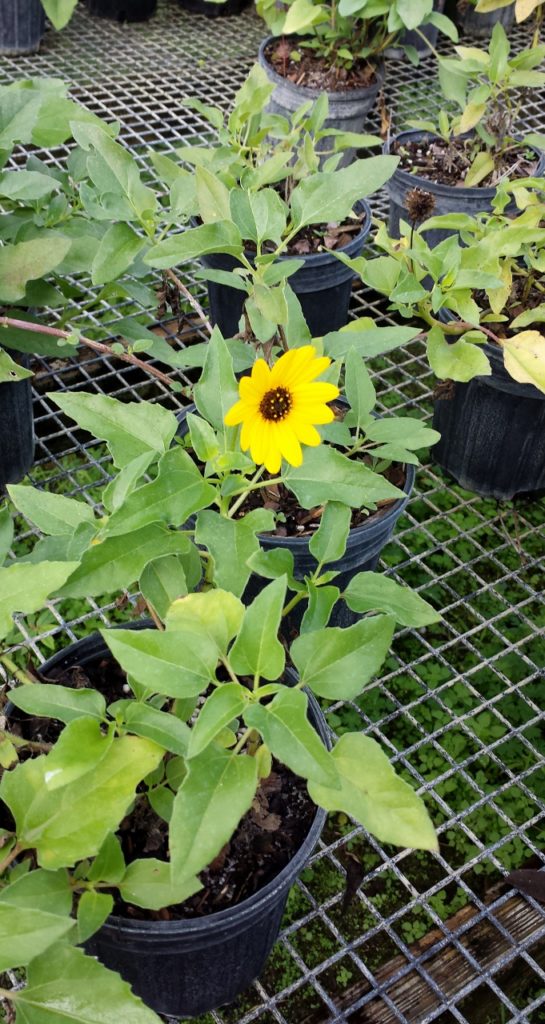
Dune Sunflower
Helianthus debilis subsp. debilis
Dune Sunflower, Beach Daisy, Beach Sunflower, Beach Dune Daisy…or whatever you want to call it, is one of the fastest growing groundcovers.
Our local East Coast variety is found on the beach and in coastal scrub habitat from Dade County to Georgia. It has two inch wide yellow flowers with a dark center that attracts butterflies, bees and other pollinators.
The seeds are eaten by a variety of songbirds and will persist in the soil for up to five years. When the original plant looks old and ratty, just mow it down or pull it up and keep the soil weeded and mulch free until the new crop germinates and takes over.
Most seedlings germinate in February to June. They like the cooler evenings, a little organic matter and watering twice a week until fully germinated. After they have reached three inches they are on their own.
I think they look best covering the dry swale in front of a home. They don’t block your view of oncoming traffic and are brake screeching, whiplash causingly beautiful when in bloom. Keep them off the sidewalk and other walkways.
Salt spray is no problem, although long periods of salt water soaking is. Full sun and dry soil are best although some organic matter helps. If they are over fertilized, the growth will be soft and spittle bugs, varnish bugs and other insects and diseases may ruin it.
Some weeding is usually needed. Plan on pulling it up in February and either replacing with purchased plants or just wait for and nurture the seedlings. It is OK to mix this with other wildflowers.
Make sure that they are either far enough away not to be smothered by the six foot diameter circles that each Dune Sunflower grows into or use plants that fight back.
I like to mix it with Gaillardia, Beach Verbena, Seaside Goldenrod, Red Salvia, Railroad Vine, Partridge Pea, Beach Creeper, Sea Lavender, Bay Cedar, Beach Elder, Blue Porterweed and various beach grasses planted several feet away. Actually, any beach plant can be added to the mix.
If you want to seed a new area, just collect the seed heads soon after the petals have dropped and they are full and starting to yellow. Dry these on paper, rub the seeds out and sprinkle on the new site. Rake the soil lightly to mix in the seeds and plants will come up over a five year period.
There are two other subspecies of Helianthus debilis that occur on the west coast of Florida. The first is Helianthus debilis, subsp. vestitus Click for more info. and click here. This is rare and looks a lot like the eastern subspecies debilis.
The final subspecies to be aware of is Cucumberleaf Sunflower, Helianthus debilis subsp. cucumerifolius, which also grows on the west coast of Florida. This gets up to six feet tall and when it hybridizes with our east coast subspecies it makes a real mess of things.
Rather than being low, the hybrids are of different heights and the planting becomes rank and unattractive. I did this by accident and it took five or more years of pulling all seedlings from my property before I was confident that it was elliminated. Click for more info.